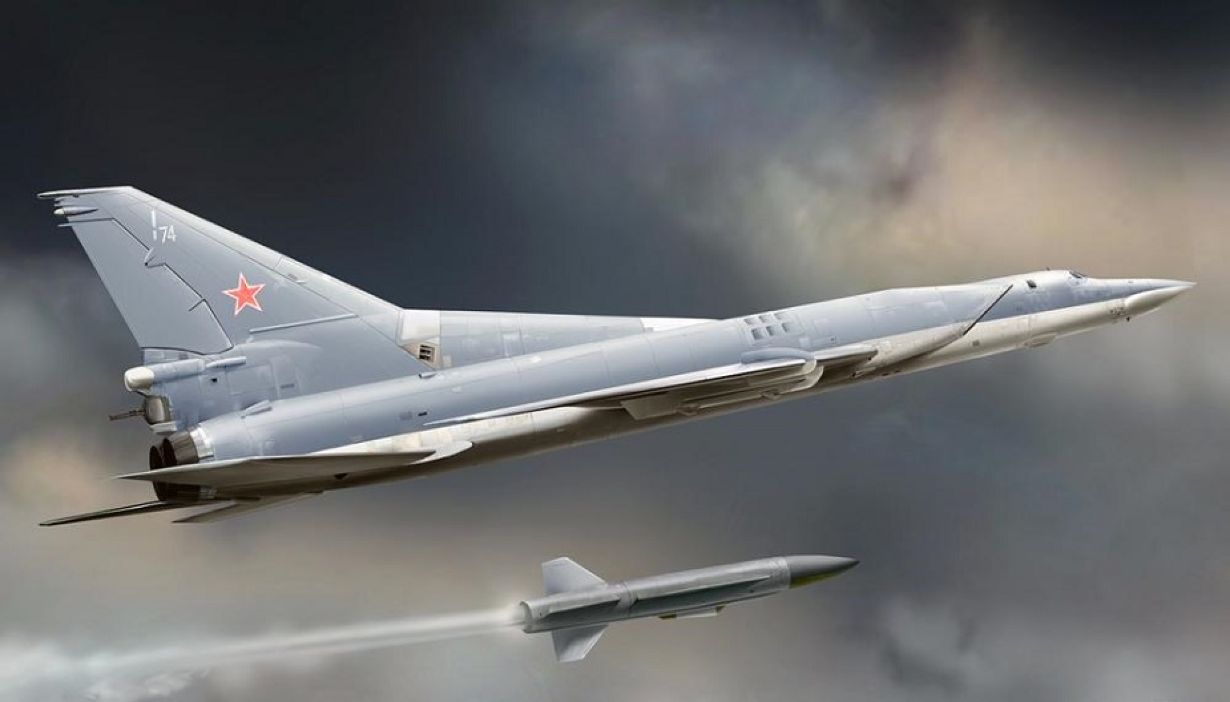On the night of September 27, Tu-22M3 missile carriers of the Russian Aerospace Forces struck Snake Island in the Black Sea with Kh-22 cruise missiles.
There were reports of explosions on the island, indicating hits.
It is likely that Ukrainian radar systems and a missile launcher were targeted.
Earlier, on September 12, Ukrainian sources reported that a pair of Tu-22M3s launched Kh-22 missiles over the Black Sea, targeting Snake Island.
In early September also, there was a report of an attack by Russian forces on Ukrainian facilities on Snake Island.
On August 25, after a long hiatus, Russian Tu-22M3 bombers launched a missile attack on Snake Island using four Kh-22 cruise missiles on the AFU garrison stationed on the island.
Snake Island, or Zmiinyi Island, has an area of approximately 0.17 square km or 17 hectares. Ukrainian units have long used Snake Island as a staging point for subsequent attacks in the Black Sea.
Deadlier Than Hypersonic Weapon, Why Ukraine Fears Russia’s Kh-22 Missiles More Than Kinzhals?
Kh-22 Missile
The Kh-22 air-to-surface missile is very difficult to intercept because of its high supersonic speed and attack trajectory.

The Kh-22 can be launched in either high-altitude or low-altitude mode. In high-altitude mode, it climbs to an altitude of 27 km and makes a high-speed dive into the target, with a terminal speed of about Mach 4.6.
In low-altitude mode, it climbs to 12,000 km and makes a shallow dive at about Mach 3.5. The missile is guided by a gyroscope-stabilized autopilot in conjunction with a radio altimeter.
The Kh-32 has three trajectory sections: the launch one to reach the cruising altitude, the cruising one when Kh-32 flies at the 40-km ceiling, and the final one when it nosedives to attack.
In December 2023, Yurii Ihnat, spokesman for the Air Force of the Armed Forces of Ukraine, acknowledged during the telethon “United News” that since the beginning of the Special Military Operation (SMO), Russian forces had launched 300 Kh-22 missiles at Ukraine, none of which could be shot down by air defense systems.
“The X-22 missile flies at a speed of four thousand kilometers per hour, it enters its target mostly along a ballistic trajectory, so special means are needed to intercept it. We need air defense systems like the Patriot, so it’s not so easy with these missiles.”
The Kh-22 missile weighs a whopping 6t and can only be carried by bomber-class aircraft. Russia primarily developed the combination of the Tu-22M3 and Kh-22 missiles to attack US aircraft carriers from a range of 1000 km, staying outside the defensive envelope of a carrier group.
Russian forces also use a modernized variant of the missile – Kh-32, which features an improved rocket motor and a new seeker head.
Strategic Significance Of Snake Island
Relatively small, Snake Island is strategically located about 45 km east of the Danube Delta and roughly 35 km off the coast of Ukraine, near the city of Izmail.
The island is important for Ukraine because it ensures the safety and viability of the sea lanes used for trade. Control over these lanes is crucial for Ukraine’s maritime trade, particularly for its grain exports, which are vital for both the national economy and global markets.
At the start of the Ukrainian war on February 24, 2022, Snake Island quickly became a focal point of Russian Navy operations.
On the first day of the SMO, the Russian Navy cruiser Moskva and the patrol ship Vasily Bykov attacked Snake Island and captured it along with its Ukrainian garrison.
Russia likely aimed to establish air defense, missile systems, and electronic warfare assets on the island in order to control the northwestern Black Sea and enforce a naval blockade of Ukraine.
In April 2022, in a startling reversal of fates, Ukrainian forces managed to sink the Russian Navy’s flagship and only operational Black Sea Fleet cruiser – Moskva.
The sinking weakened the air defense capabilities around the island. Thereafter, Ukrainian forces relentlessly attacked the island using drones, missiles, and howitzers, including Western-supplied French CAESAR howitzers and Harpoon anti-ship missiles.
By June 2022, Ukraine forced Russian forces to withdraw from the island.
Attacks On Commercial Shipping
On August 23, Ukrainian forces sank a Russian railway ferry loaded with fuel tanks at the Russian port of Kavkaz in the southern Krasnodar region.
According to MarineTraffic, an international monitoring service, Conro Trader was a roll-on/roll-off cargo ship with a gross tonnage of 3,998 tonnes sailing under the Russian flag.
It’s believed that the missile used for the attack was an R-360 Neptune, a Ukrainian anti-shipping, subsonic cruise missile with all-weather capabilities developed by the Luch Design Bureau in Kyiv.
Most likely responding to the Ukrainian attack, on September 11, 2024, Russian forces struck a Turkish-operated merchant vessel named MV Aya using a Kh-22 missile launched from a Tu-22M3 Backfire bomber.
This incident occurred about 75k m south of Snake Island, highlighting an escalation in Russian tactics by directly targeting civilian shipping involved in grain transport.
Conclusion
It’s likely that Russian attacks on Snake Island are aimed at frustrating Ukrainian efforts to strengthen radar and missile defenses on Snake Island to better protect commercial shipping deployed for grain and other trade.
The use of Tu-22M3 bombers armed with Kh-22 missiles, an insurmountable combination, is likely a reflection of Russian determination to achieve their aim.
It appears that Russia has taken the gloves off, provoked by the Ukrainian attack on a merchant ship. Also, to deter Ukrainian forces from staging through Snake Island for attacks on Crimea.
- Vijainder K Thakur is a retired IAF Jaguar pilot, author, software architect, entrepreneur, and military analyst.
- VIEWS PERSONAL OF THE AUTHOR
- Follow the author @vkthakur